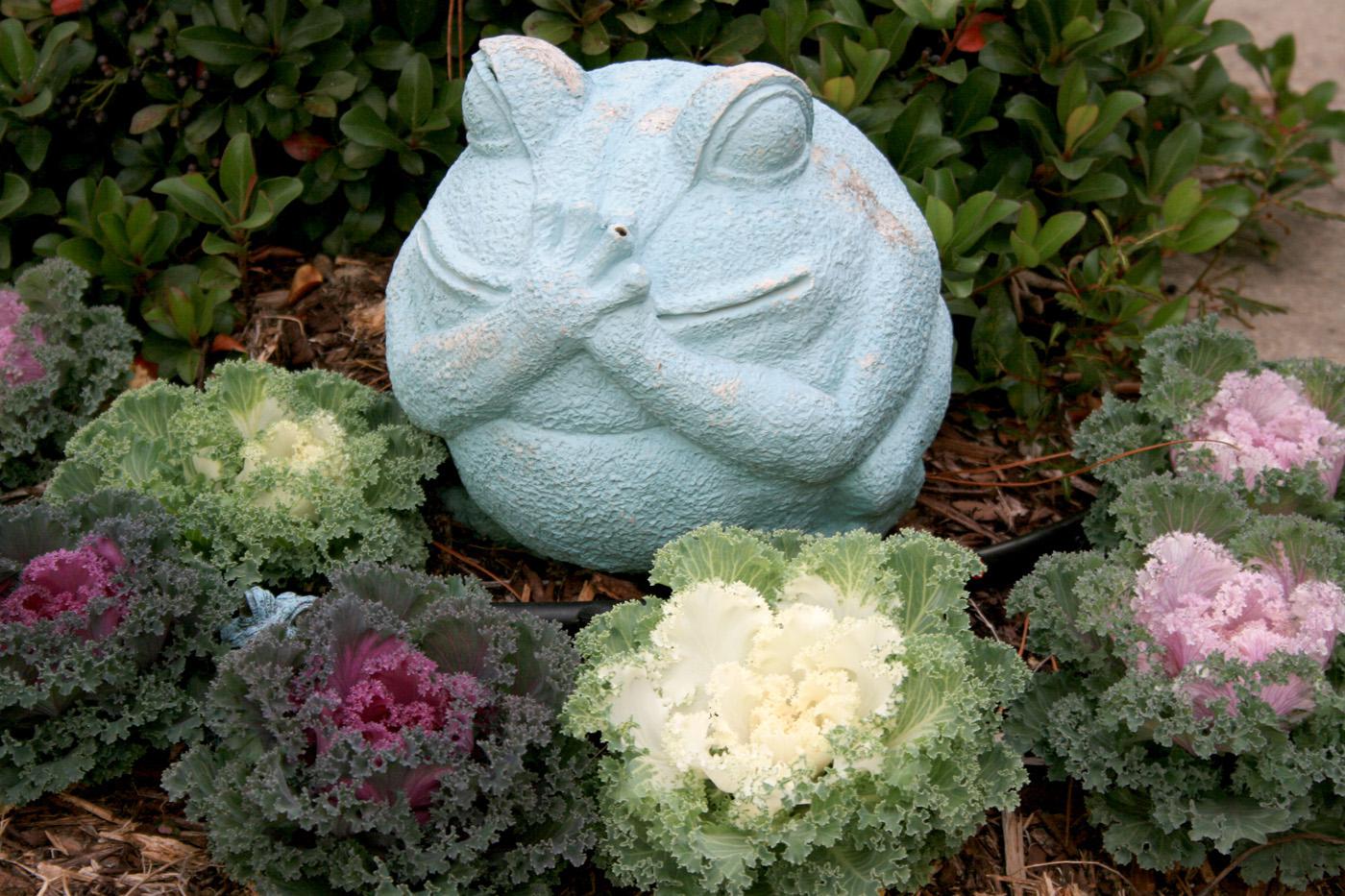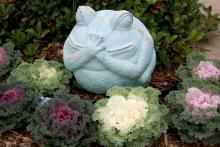Information Possibly Outdated
The information presented on this page was originally released on November 14, 2011. It may not be outdated, but please search our site for more current information. If you plan to quote or reference this information in a publication, please check with the Extension specialist or author before proceeding.
Colorful Kale brightens winter gardens
Pansies and viola bring vivid hues to many gardens during the winter months, but adding the engaging colors and textures of ornamental kale takes a landscape from safe to sensational.
Skeptical? Comments I have heard about ornamental kale include, “You only see it planted in commercial landscapes,” and, “It’s not for the average home garden.” I used to be in this group until I saw the light, or should I say, the ornamental kale. While the plants known as ornamental kale are typically seen in commercial landscapes, they are perfect for home landscapes, too, because they are low maintenance. Who does not like a low-maintenance plant when the temperatures start to dip?
Ornamental kale is available in a variety of unusual color combinations. The colors in the center of the plants range from whites and pinks to purples. The colors intensify as the temperatures drop.
Different leaf textures and types, such as feathery, crinkled, or round, should be planted together to increase contrast. An ornamental kale that has performed really well in Mississippi for several years is called Redbor. The crinkly leaves of Redbor turn an incredible, dark red through the winter months. Plant Redbor with a white version called Winterbor to create an attention-getting landscape combination.
Ornamental kale needs to be planted in well-drained soil that is kept consistently moist. This is a vigorously growing plant that needs steady nutrition. I always add about one tablespoon of slow-release fertilizer directly into the transplant hole. Later in the winter season, a dose of water-soluble fertilizer every month will keep your ornamental kale happy and beautiful.
The only real insect pests are the same ones that like the other cole crops, such as cabbage loopers and related insects. Reliable pest control can be maintained with Bacillus thuringensis (Bt). I prefer to use products containing the active ingredient spinosad. Both of these are good choices, especially for edible crops.
Like its vegetable garden cousins, ornamental kale is edible and is often used as a garnish. It’s a good source of vitamin C, calcium and beta carotene. But what about actually cooking with it? Ornamental kale has been selected for color in the garden, but prolonged cooking will fade the colors. To set the colors, quickly blanch the kale and then put it in an ice bath. Cut the leaves into strips and add to your dish during the last few minutes of cooking for a tasty, nutritious and colorful addition to dinner.
Ornamental kale is a very close relative to broccoli. In fact, the cole crops of broccoli, cauliflower, Brussels sprouts, cabbage and kale are all known botanically as Brassica oleracea, but each is a different variety.
Whether you want your landscape to be strictly ornamental or also edible, try some ornamental kale this winter for a unique addition to your garden.








